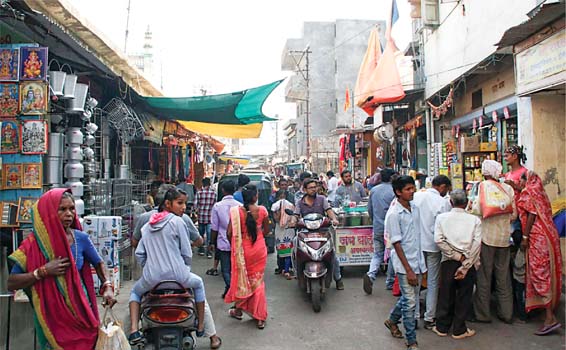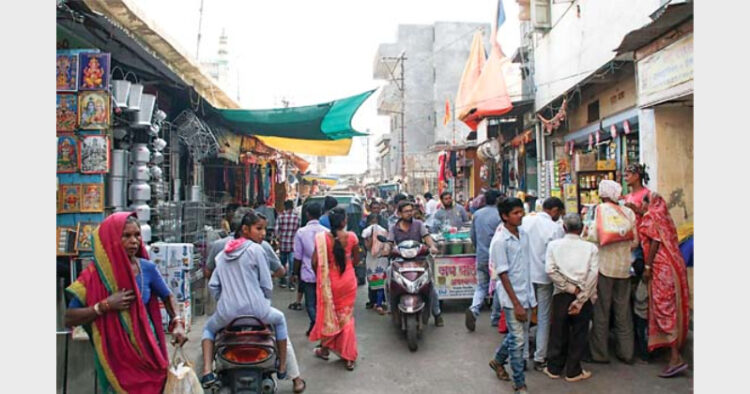
We must understand that correct diagnosis and correct medicine is the mantra for the right cure. When we see that the problem is purely slowdown of demand, solutions for augmenting supply are no good and may actually prove to be counterproductive
India’s GDP growth rate in the last quarter (June to September 2019) has come down to merely 4.5 per cent, the lowest in the last 26 quarters. Prior to this, GDP growth rate of 4.3 per cent was recorded in the fourth quarter of 2012-13. An economy where GDP had been growing at the fastest pace amongst large economies of the world, this slowdown is definitely a matter of grave concern. Suggestions would come, if there is a problem. Also, those who are at the helm of the affairs at policy-making would make efforts to overcome the problem. If we diagnose the problem correctly and take suitable remedial measures, we will reach the solution, sooner or later. However, if we err in diagnosis, solutions in the form of corrective measures are bound to be faulty. The same is true in the present case. Policymakers as well as the ‘experts’ seem to be erring in the diagnosis and therefore slipping in solutions as well.
Why Slowdown?
This has to be understood that this slowdown is not due to supply side it is coming from the demand side. In fact, despite having the capacity to produce, the paucity of demand is causing a slowdown in production. India has had a long history of hyperinflation, causing hardships to the poor in the past, apart from misdirected usage of resources towards hoarding and black marketeering. Financial Responsibility and Budgetary Management (FRBM) Act passed more than a decade ago mandated government to keep its fiscal deficit within limits, which is being slowly implemented. Measures like demonetisation coupled with low fiscal deficit led to the almost unprecedented low and declining rate of inflation in the country. We must understand that some degree of price rise also incentivises production and investment. Therefore, investment demand suffered a slowdown, which gets reflected in a lower rate of Gross Fixed Capital Formation (GFCF).
Housing demand had been the engine of growth in the first decade of this century, as it has vast ramification. However, the same couldn’t be sustained due to over construction, leading to huge inventories, ultimately causing a price fall of nearly 30 to 50 per cent. Lower housing prices failed to enthuse home buyers; rather recessionary tendencies in housing led to further lowering of price expectations, which deepened the crisis further. High rates of interest also came in the way of improving housing, industrial and infrastructure investment demand. Lately, when slowdown was being experienced in automobiles, discounts by companies again couldn’t bring cheer in the market.
It is not very far to seek that the present slowdown has mainly been caused by slackening of demand and not due to supply-side bottlenecks; though in the past being a developing economy, major down puller used to be the supply-side factors, and therefore, all efforts used to be directed towards enhancing supply and removing bottlenecks in infrastructure (electricity, rail and road, finance, marketing, etc.) and they yielded results as well. However, the problem today has less to do with supply and is more related to demand factors.
Misdirected Remedies
Slowdown of demand is more related to the purchasing power of the people. We understand that with growth, incomes go up and therefore people may tend to demand more goods and services. However, this linkage is disrupted due to one reason or the other. We see that rising GDP has failed to increase incomes of the masses in general proportionately. Income and wealth is concentrated in few hands and therefore demand failed to grow in proportion to GDP growth; and this is what we call a slowdown in demand, causing lack of incentive to produce more and invest more.
Despite the extremely low rate of inflation, RBI’s stance, under Raghu Ram Rajan, of not reducing policy rate of interest, and therefore keeping borrowing cost high, added fuel to fire by diminishing any chance to raise demand.
Remedy to curb slowdown comes from policy measures to help demand to rise. Putting more income in the hands of common people is the long term solution to this situation. However, if we feel that reducing tax on rich and middle class can solve the problem, it wouldn’t be right, because it can jeopardise government’s finance, which is already disturbed badly due to shortfall in GST and direct tax collection, rebate in corporate taxes, non-receipt of taxes from e-commerce giants and tech companies.
No doubt the government is under tremendous pressure in view of the numbers being reported about GDP, unemployment, etc. However, in the guise of slowdown, globalisation apologists are trying to further their agenda by suggesting their types of reforms. We must note that most of their suggestions are linked to the supply side. In this series, the latest bunch of suggestions are coming from Raghu Ram Rajan, Ex-Governor RBI and IMF. Rajan suggests two major reforms namely land acquisition and labour reforms. Similarly, suggestions from IMF are also not different. These suggestions are misplaced in the present circumstances, as we hardly find any project being blocked due to non-availability of land or labour reforms. These days talking about labour reforms has become ‘fashionable’, meaning thereby the freedom to ‘hire and fire’. Frankly speaking, both these reforms namely land and labour reforms have been contentious; without having any relevance to the present problem of a demand slowdown.
Rajan suggests maintaining the share of states in central tax pool, knowing very well that the same is within the jurisdiction of the Finance Commission, which has already finalised its report. Even if we assume that through this suggestion, Rajan means strengthening of states’ finances, again it would be zero-sum game for overall finances of the government. He suggests fast track bankruptcy for realty developers. He also suggests power and telecom reforms to promote competition among players. For agriculture, he talks about enabling agriculturists to come out of agriculture. If we see carefully, there is hardly any meaningful remedy coming from these suggestions for present-day problems. Since the economic indicators are showing a slowdown in the economy, the economists like Rajan are out with the series of perverted policy suggestions, which are already in continuation since 1991 in the name of economic reforms, packaged differently. They are all offshoots of ‘Washington Consensus’, which the forces of globalisation have been propagating to serve their interests. These policies have been the cause of most of the woes of the developing economies, including India. Whenever the country is in trouble, these suggestions start pouring in as a remedy for all ills. We must understand that correct diagnosis and then correct medicine is the mantra for the right cure. When we see that the problem is purely slowdown of demand, solutions for augmenting supply are no good and may actually prove to be counterproductive.
Solving Slowdown of Demand
We must not forget that the business cycle, which is primarily the result of piling of stock due to depressed price expectations, may end in due course of time. We may shorten this business cycle by an appropriate mix of policy measures aimed at an increase in demand by increasing government demand or by increasing the purchasing power in the hands of the general public. However, no amount of policy measures aimed at supply may prove helpful. Rather, these measures may boomerang. In fact, we are facing the problem of lack of sufficient demand due to paucity of purchasing power in the hands of workers, farmers and poor masses. This is the cumulative result of the policies adopted in the last three decades. We have been facing rising inequalities and unemployment due to the policies of privatisation and globalisation. Due to the concentration of incomes and wealth in the hands of few people and the growth of GDP has been jobless growth, purchasing power could not be increased with poor. We need to correct this before we embark on long term sustained growth.
(The writer is Associate Professor, Department of Economics in P.G.D.A.V. College, University of Delhi)













Comments